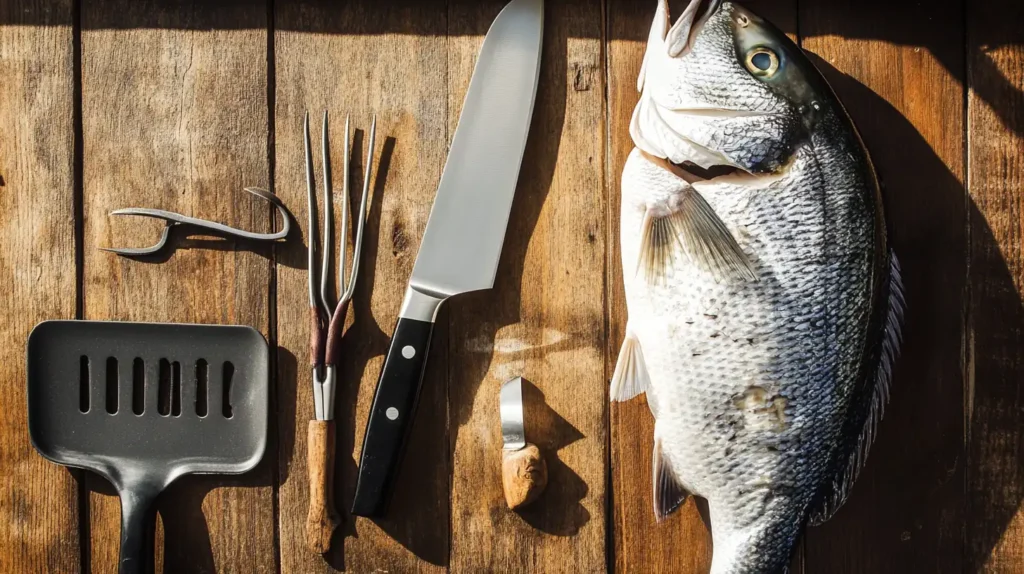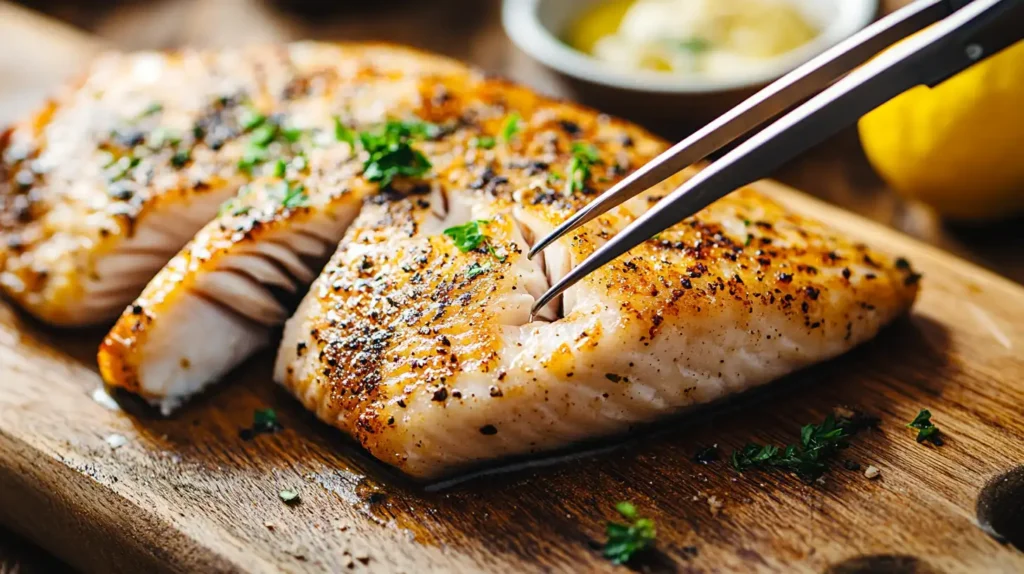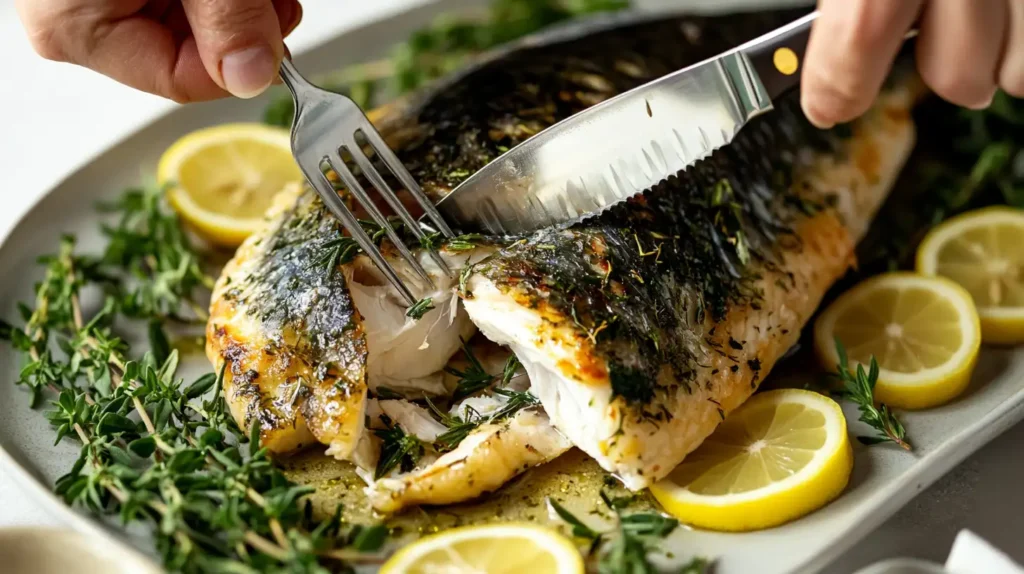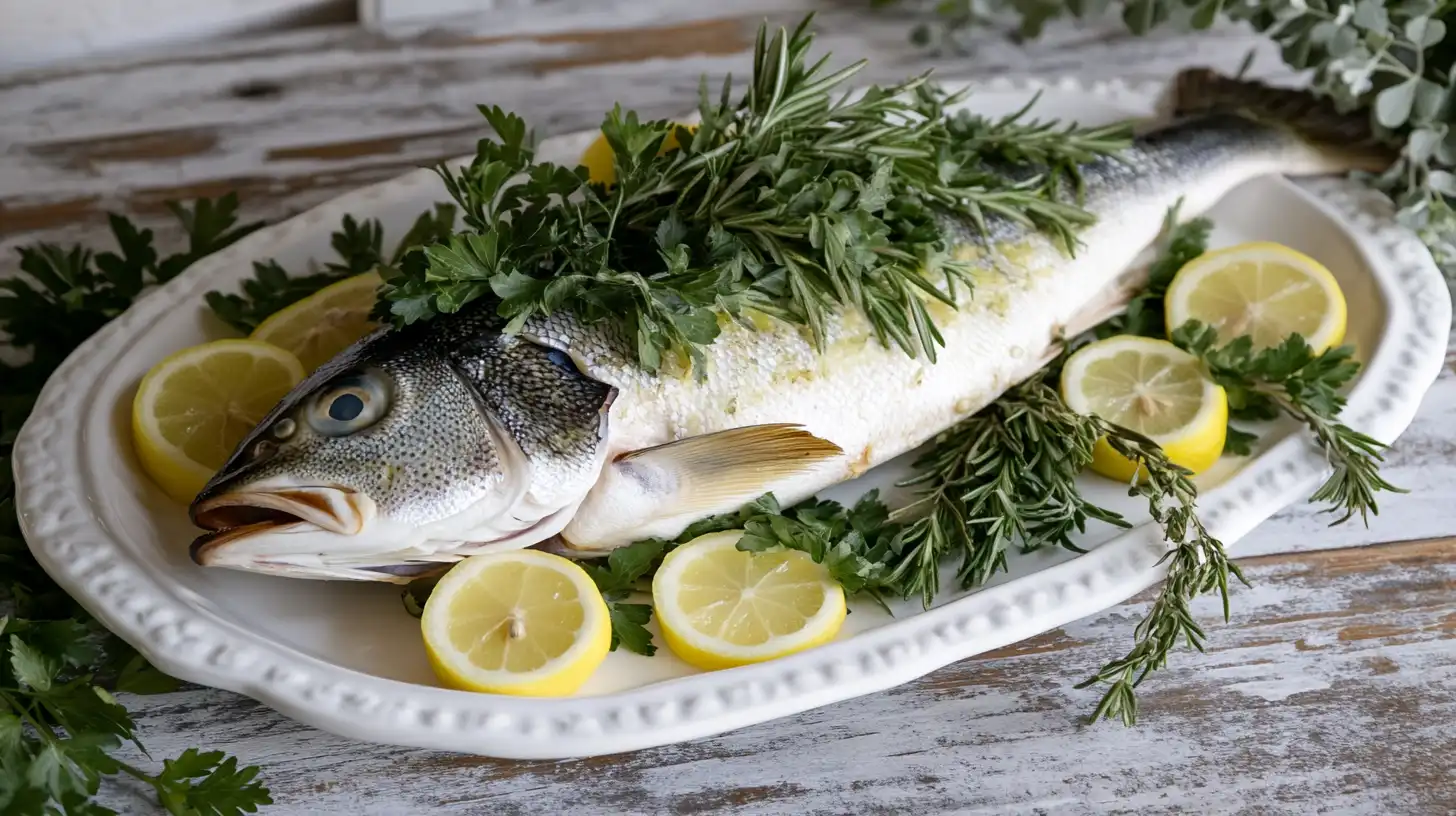Cooking whole fish like branzino can be an intimidating process, especially if you’re unsure how to navigate the tricky task of removing bones. But don’t fret—this guide is here to help! Deboning branzino after cooking is a straightforward process when broken into simple steps. With the right tools and techniques, you’ll enjoy tender, flavorful fish without worrying about stray bones.
In this article, we’ll cover everything you need to know about how to debone branzino after cooking. From preparation to serving, each part of this guide will provide practical tips, detailed instructions, and answers to common questions. Let’s dive in!
Table of Contents
Introduction to Deboning Branzino
Branzino, also known as Mediterranean sea bass, is a popular choice for its mild flavor and delicate texture. Whether baked, grilled, or roasted, this whole fish delivers a memorable culinary experience. However, to fully enjoy it, you’ll need to debone it carefully.
What Is Branzino and Why Is It Popular?
Branzino, a European sea bass, is renowned for its versatility in cooking and its subtle, sweet flavor. It’s a staple in Mediterranean cuisine, often served whole to retain its natural juices. Cooking it whole enhances its taste, but the bones need removal before serving.
Why Deboning Branzino After Cooking Is Important
Cooking the fish whole with its bones and skin keeps the meat moist and flavorful. However, leaving the bones in while eating can be inconvenient, especially for guests. Deboning ensures a seamless dining experience while preserving the fish’s delicate presentation.
Overview of the Process: What to Expect
Deboning a cooked branzino involves a few precise steps. You’ll start by removing the head and tail, splitting the fish open along the spine, and gently extracting the bones. Don’t worry—it’s easier than it sounds, especially with this guide.
Tools and Preparation
Essential Tools for Deboning Branzino
Before diving into how to debone branzino after cooking, it’s essential to gather the right tools and prepare effectively. These steps will save you time and effort while ensuring a smoother deboning process.

To debone branzino efficiently, you’ll need:
- A sharp knife: A fillet knife works best for precision cuts.
- Fish tweezers: These are crucial for removing pin bones without damaging the flesh.
- Two large spoons or spatulas: These help lift the fish flesh and remove the backbone.
- A clean cutting board: Ensure it’s stable and large enough for the fish.
Preparing the Fish for Deboning
Before starting, make sure the fish is fully cooked and rested for 5-10 minutes. This allows the meat to firm up, making deboning easier. If branzino has a crispy skin, handle it gently to preserve its texture.
Safety Tips for Handling Cooked Fish
- Work in a well-lit space to spot small bones.
- Keep your tools clean and dry to prevent slipping.
- Use gentle pressure to avoid tearing the fish meat.
With these tools and tips ready, you’re all set for the main event. Let’s move on to the detailed steps for deboning cooked branzino.
Step-by-Step Guide to Deboning Branzino
This section walks you through each step of how to debone branzino after cooking. With a little practice, you’ll be able to handle this process like a pro.

Step 1: Remove the Head and Tail
Using your knife, cut off the fish’s head and tail. These pieces often detach easily when the fish is cooked. Set them aside or discard them.
Step 2: Open the Fish Along the Spine
Starting from the top, use a spoon or spatula to gently lift the skin along the backbone. Slowly work your way down, exposing the fish meat without tearing it.
Step 3: Extract the Spine and Large Bones
Once the fish is open, locate the spine. Use your hands or utensils to lift the spine carefully, pulling it away from the meat. Be patient—this step requires precision. Large rib bones often come out with the spine.
Step 4: Remove Pin Bones
Run your fingers over the fish to feel for any remaining bones. Use fish tweezers to extract them gently. This ensures the fish is completely bone-free.
Step 5: Prepare the Flesh for Serving
Finally, lift the fillets off the skin, if desired. Arrange the meat on a serving plate, drizzle with olive oil or lemon juice, and serve while warm.
Mastering these steps for how to debone branzino after cooking makes the process less daunting. In the next section, we’ll cover common mistakes and how to avoid them.
Common Mistakes and How to Avoid Them
Even with the best intentions, it’s easy to run into snags when learning how to debone branzino after cooking. This section highlights frequent errors and how to sidestep them, ensuring a smooth and successful experience.
Pulling Too Hard and Breaking the Flesh
One common mistake is applying too much force when removing the spine and bones. Branzino’s delicate flesh can tear easily, leaving you with a messy presentation. To avoid this:
- Use a spoon or spatula to lift the bones gently.
- Take your time, working slowly from one end of the fish to the other.
Leaving Small Bones Behind
Nothing spoils a perfect bite of branzino like discovering a stray pin bone. These tiny bones can be tricky to detect, but with patience, you can catch them all. To minimize this issue:
- Run your fingers lightly over the flesh to feel for hidden bones.
- Use fish tweezers to extract even the smallest pin bones.
Not Using the Right Tools
Without proper tools, the deboning process becomes much harder. Avoid improvising with inappropriate utensils like regular tweezers or blunt knives. Always have a sharp fillet knife and dedicated fish tweezers on hand.
Rushing the Process
Hurrying through deboning can result in uneven fillets and missed bones. Instead, treat the process as an opportunity to enhance your culinary skills. A little patience goes a long way toward achieving beautifully deboned branzino.
Benefits of Cooking Branzino Whole

Tips for Storing Leftover Fish
Cooking branzino whole might seem daunting, but the advantages far outweigh the effort. Beyond enhancing flavor, it transforms your dish into an impressive centerpiece.
Enhanced Flavor From Bones and Skin
When you cook branzino whole, the bones and skin work together to lock in moisture and flavor. The natural oils from the skin seep into the meat during cooking, resulting in a tender and juicy dish. Plus, the bones add a depth of flavor you won’t achieve with fillets alone.
Moisture Retention During Cooking
Whole branzino retains its moisture better than fillets, which are more prone to drying out. This makes it perfect for roasting or grilling, as the protective skin and bone structure act as a barrier against overcooking.
For more delicious fish recipes, explore related content like our guide to preparing fresh branzino.
In the next section, we’ll discuss serving tips and how to store leftover fish. Stay tuned!
Serving and Storing Deboned Branzino
Now that you’ve mastered how to debone branzino after cooking, it’s time to focus on presentation and making the most of any leftovers. Serving and storing properly enhances both the experience and the longevity of this flavorful fish.
Best Ways to Serve Deboned Branzino
Once deboned, branzino is a versatile dish that pairs beautifully with a variety of sides and sauces. For a simple yet elegant presentation:
- Drizzle with olive oil and lemon juice: This classic pairing highlights the fish’s delicate flavor.
- Add fresh herbs: A sprinkle of parsley, dill, or basil adds a vibrant touch.
- Serve with sides: Complement the fish with roasted vegetables, a light salad, or herbed potatoes.
To elevate the dish, you can also try serving it with a creamy beurre blanc sauce or a tangy caper dressing.
Proper storage ensures your leftover branzino stays fresh and flavorful:
- Cool before storing: Allow the fish to cool to room temperature before refrigerating.
- Use an airtight container: Store in a sealed container to retain moisture and prevent odors.
- Reheat gently: To avoid drying out the fish, reheat in a low oven or a covered skillet over low heat.
Leftover branzino is also excellent in dishes like fish tacos or mixed into pasta for a quick meal.
FAQ Section
Even with detailed guidance, you might have additional questions about how to debone branzino after cooking. This FAQ section addresses common queries to help you feel confident in the kitchen.
How Do You Debone a Fish Without Breaking It?
Deboning without breaking the flesh requires patience and gentle handling. Use a spoon or spatula to separate the meat from the bones, and avoid rushing the process. Practicing with smaller fish like branzino is a great way to refine your skills.
Can You Eat Branzino Bones If You Miss Any?
Branzino bones are small and soft, but they can be a choking hazard if swallowed. Always take time to remove as many bones as possible. If a bone is missed, advise diners to eat cautiously.
What Is the Easiest Way to Debone a Cooked Fish?
The easiest method is to start by removing the head and tail, then open the fish along the spine. Lift the backbone and rib bones gently, and use tweezers to remove any pin bones. For detailed steps, revisit Part 3 of this guide.
Should Branzino Be Deboned Before or After Cooking?
It’s best to debone branzino after cooking. Cooking the fish whole keeps the meat moist and flavorful, while the bones and skin help protect it from drying out.
For more tips on preparing fish, explore our comprehensive guide to branzino preparation.
Up next, the conclusion will tie everything together with final thoughts and encouragement for your next cooking adventure!
Conclusion and Final Tips
Learning how to debone branzino after cooking can transform your dining experience from frustrating to enjoyable. Whether you’re preparing a weeknight dinner or a special occasion meal, this skill allows you to serve branzino with confidence and flair.
Recap of Key Steps and Tips
- Start by removing the head and tail to make the fish easier to handle.
- Open the fish along the spine, lifting it gently to separate the bones.
- Use tools like tweezers to remove small pin bones, ensuring a smooth texture for your guests.
- Always serve your branzino with complementary flavors like lemon, olive oil, or fresh herbs.
Encouragement for First-Time Cooks
If this is your first time deboning a fish, don’t worry if it’s not perfect. The process gets easier with practice, and each attempt builds your confidence and skill. With patience and the right tools, you’ll soon be serving beautifully deboned branzino like a pro.
Remember, the joy of cooking lies in the experience as much as the result. So take your time, enjoy the process, and savor the fruits of your labor.
Additional Tips and Resources
Cooking is always more enjoyable when you have access to helpful resources. For more culinary inspiration and guidance, consider these additional tips and ideas.
Explore More Fish Recipes
Branzino is just one of many fish that can be cooked whole and deboned. Expand your repertoire by trying similar recipes with trout, snapper, or rockfish. Each offers unique flavors and textures, making your meals more diverse and exciting.
Learn From Mistakes and Improve
Mistakes are part of the learning process. If your first attempt at how to debone branzino after cooking feels awkward, use it as a learning experience. Note what worked and what didn’t, and adjust your technique for next time.

